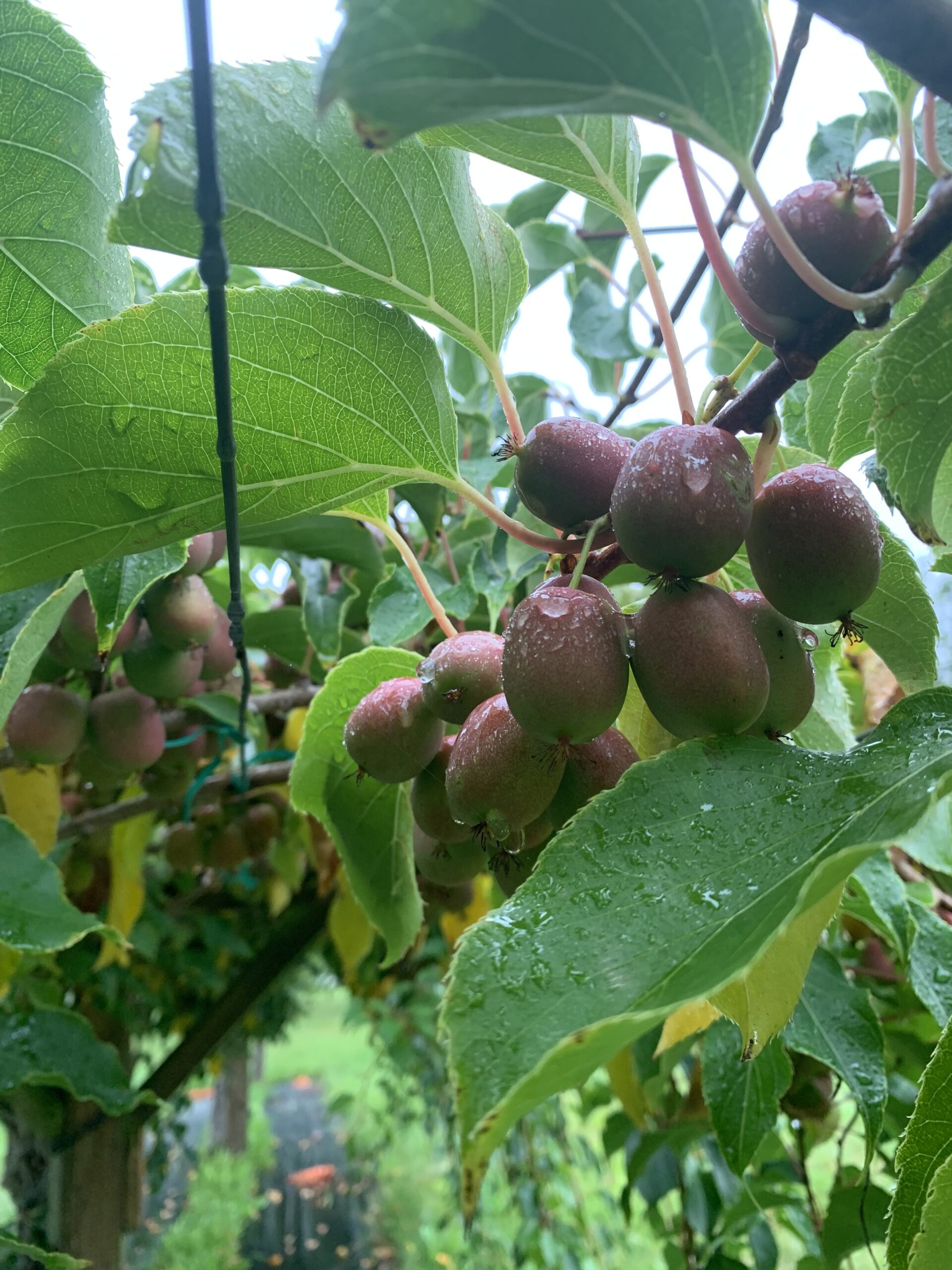
Kiwi Berries nearly ready for harvest
This week we’re continuing Honeycrisp harvest as well as some smaller picks of dessert and cider apples, pears and potentially the first kiwi berry harvest of the year. Most of the time not spent harvesting is spent packing fruit this time of year with a grab bag of field tasks squeezed in where time allows.
Fruit/Bud/Tree Development
- Some of our late season fruit such as Quince and Kiwi berry are fully sized and have reached mature coloration. We’re just a matter of days away from fully ripening on some of these crops. Late season apples are showing deeper reds each week.
- Flower buds for next season are beginning to appear on some crops. Black currants have perhaps the earliest very visible flower bud initiation in the fall, but the first signs of next season begin to appear all around the orchard this time of year.
- We harvested a beautiful crop of Crimson Crisp at the end of last week off our upright fruiting offshoot trees. These apples at first assessment appear to have the best packout since our transition to organic.
Pest & Disease
he wet summer we’re having has highlighted a number of summer fruit diseases that are harder to come by in dry years. We’ve observed a significant amount of preharvest fruit rot in Honeycrisp due to fungal infection of the fruit before harvest. Similarly, some varieties of quince have shown increased rates of brown rot. Both diseases cause premature spoilage of fruit out in the field.
Apples with russeted skin, such as customer favorite Karmijn de Sonneville, are also prone to late summer fruit diseases known as flyspeck/sooty blotch. These are groups of fungal organisms that colonize rough skin apples. These fungi are given a leg up when leaf and fruit surfaces accumulate sufficient hours of wetness throughout the growing season and typically appear in August and September. Though sooty blotch and flyspeck are edible, they render a lot of fruit very ugly and can sometimes compromise fruit shelf life. Karmijn is a variety that seems to reliably have this disease issue in our climate without additional interventions with fungicides.
Deer are a persistent issue in our orchard, as we have likely mentioned many times in these updates. Netting have provided protection from deer in addition to insect pests, but this leaves some trees that our netting doesn’t cover particularly vulnerable. Even some of the temporary deer exclusion fences we have built around the farm aren’t 100% effective at keeping persistent deer from entering fields and causing damage.
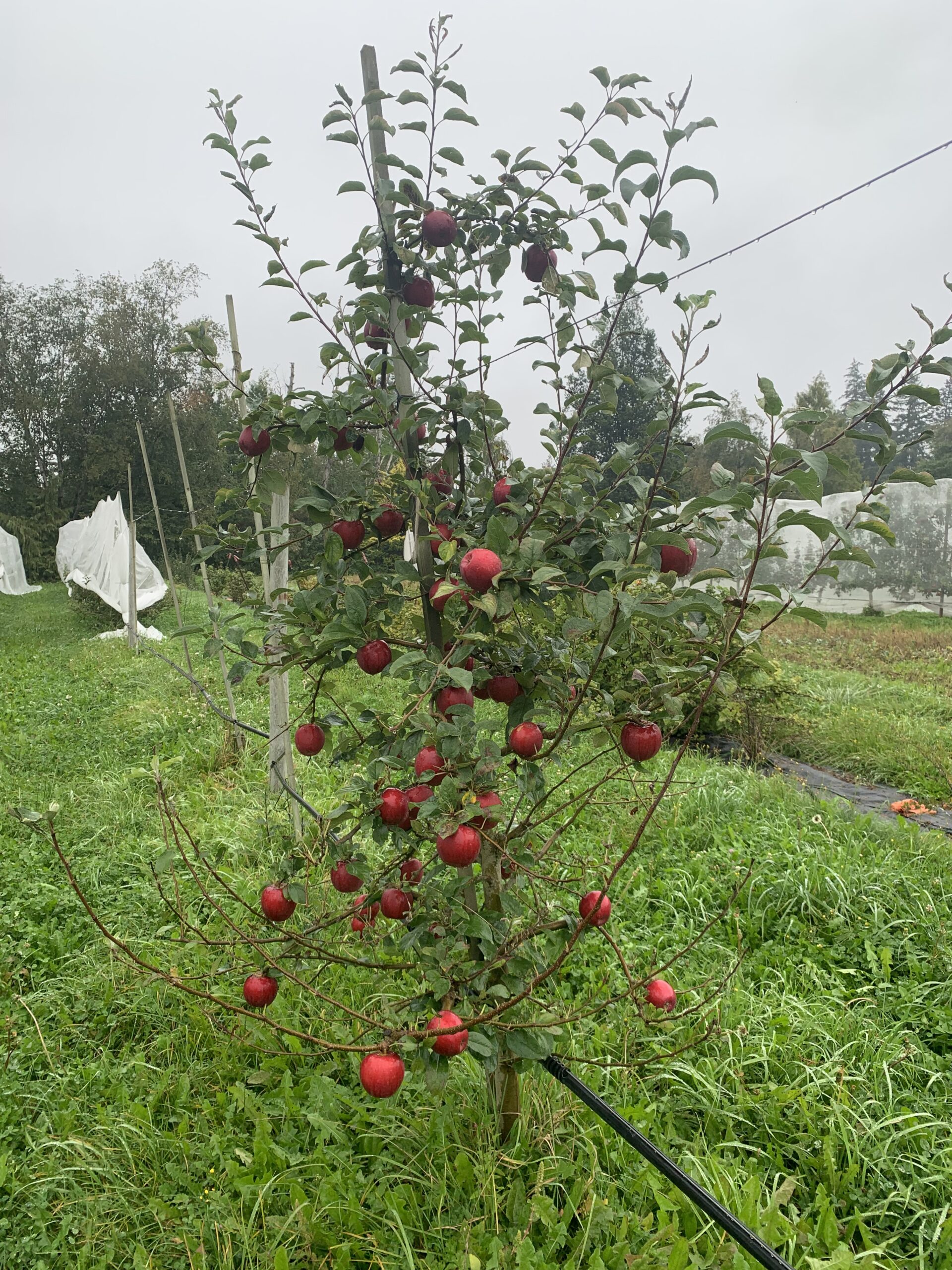
An uncovered apple tree suffering from some deer browsing
What’s Ripe?
This week we’re harvesting: Honeycrisp, Spartan, Cosmic Crisp and assorted cider apples. Seckel, Chojuro and Mishisrasu Pears. Potential harvests on Creston, Crimson Gold, Fuji, Conference and Armida Pears. We’re also sending cider bins off for pressing weekly!
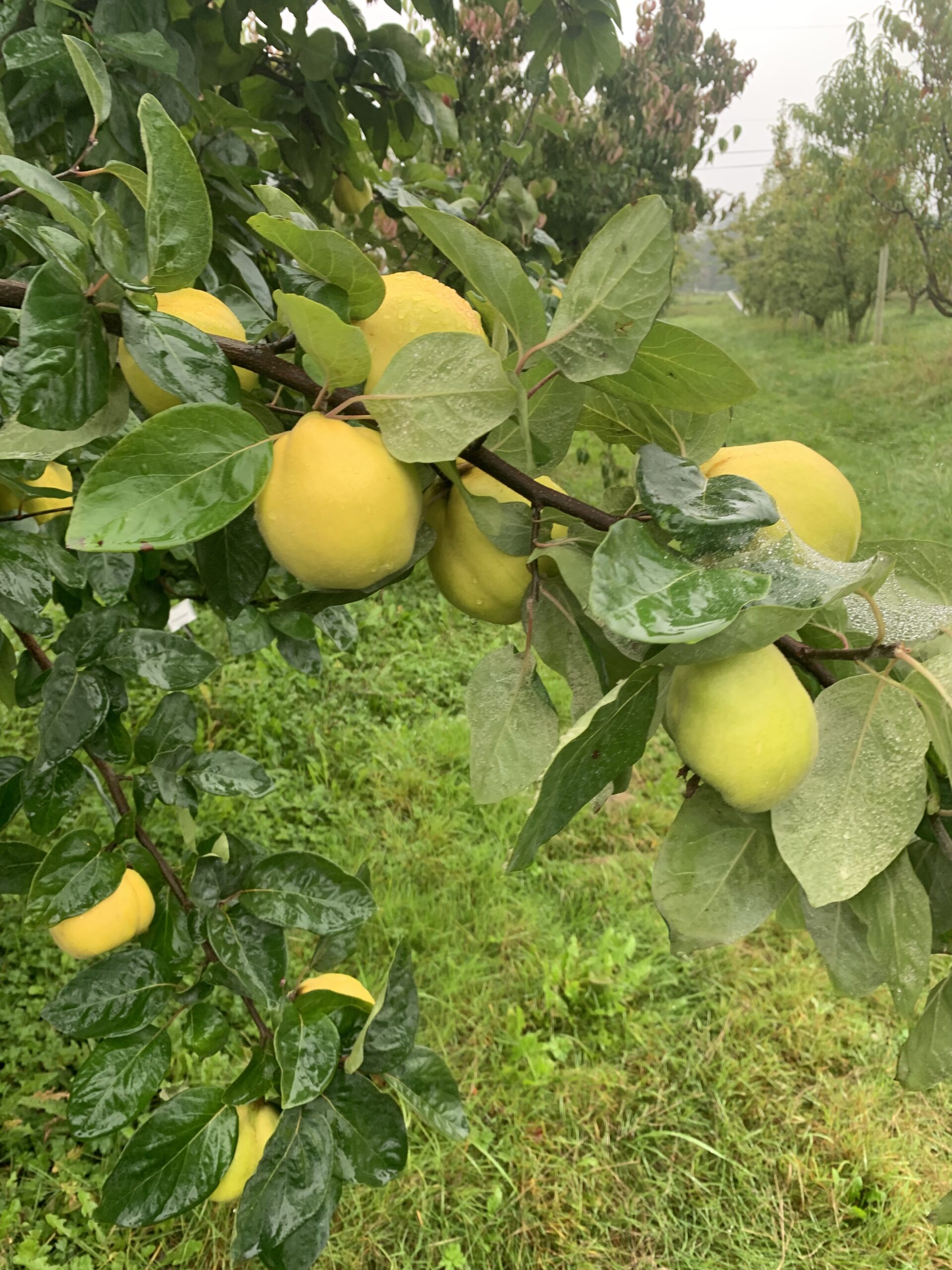
Quince coloring up-we’re waiting for the distinct Quince aroma to fill the air to know when they’re ready for harvest
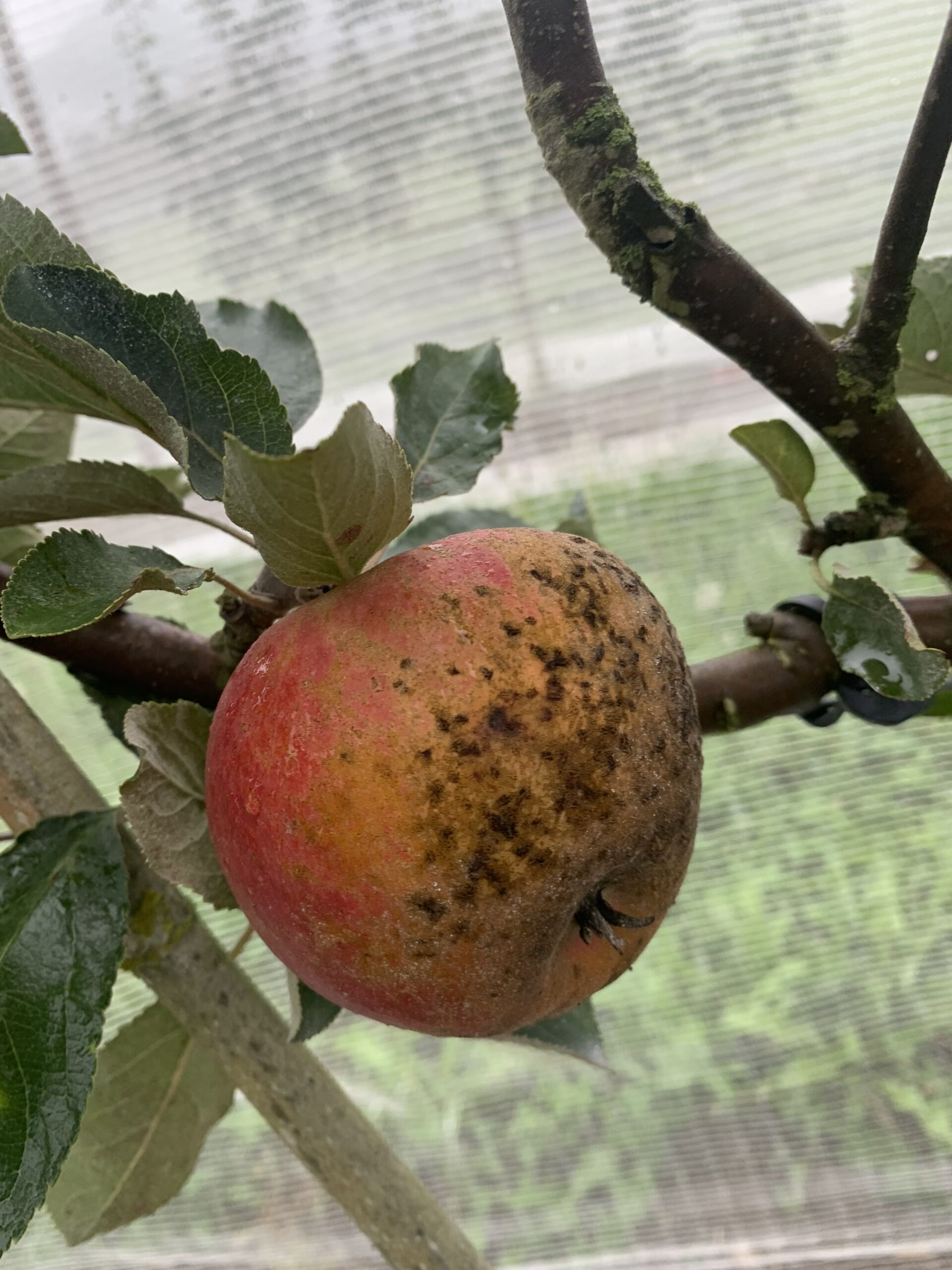
Sooty Blotch and Flyspeck on a Karmijn apple
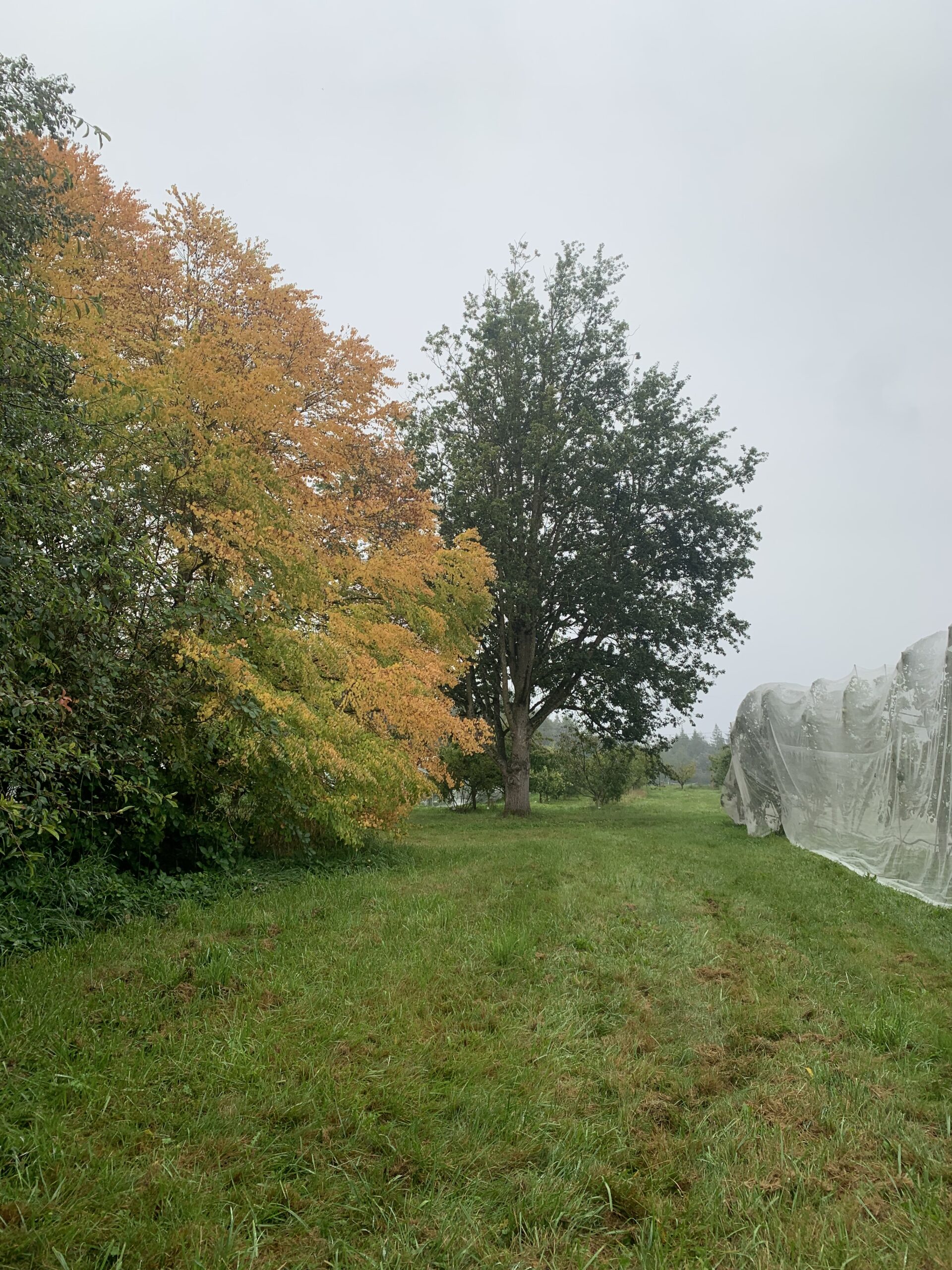
Fall color appearing on the orchard perimeter.

